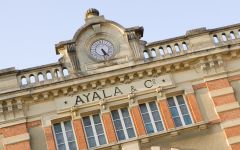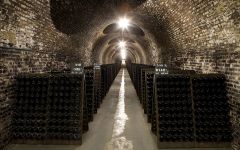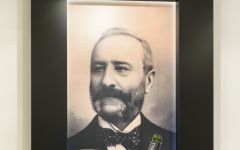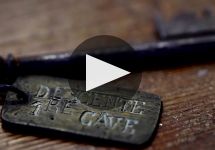Ayala Brut Rose Majeur
-
James
Suckling -
Wine
Spectator -
Jeb
Dunnuck



Product Details
Your Rating
Somm Note
Winemaker Notes
Brut Rosé Majeur is a blend of Chardonnay (51%), Pinot Noir (40%) and Pinot Meunier (9%). The very high proportion of Chardonnay and the ageing process result in a Champagne with remarkable finesse and elegance.
Ayala currently owns 35 acres in Champagne. Thanks to its privileged location in the heart of the Grand Crus of Montagne de Reims and their link to Bollinger, they also have unique access to top quality grapes.
Everything from grape reception to vinification, aging, riddling and disgorgement is done at the Ayala cellars. Brut Rosé Majeur is fermented in stainless steel, with a focus on freshness and precision. It spends 2.5 years on the lees and rests in the cellar for at least 3 months after disgorgement.
Professional Ratings
-
James Suckling
A very pretty rosé with dried-strawberry and apple aromas and flavors. Some spiced-pear and iron undertones. Cranberries, too. Full-bodied with precision and tightness. Focused and solid. Fine bubbles and length. Always an excellent rosé. 51% chardonnay, 39% pinot noir and 10% pinot meunier. 6 g/l dosage.
-
Wine Spectator
A bright rosé Champagne, offering a driving note of pink grapefruit granita layered with toast, pickled ginger and spun honey flavors. Lively, even zesty, in texture, with lip-smacking acidity and a creamy, minerally finish. Disgorged March 2019. Drink now.
-
Jeb Dunnuck
A lacy and elegantly styled Rose Champagne, the NV Champagne Majeur Rose Brut is always a high proportion of Chardonnay, with it clocking in at 51% of the blend for this vintage, with 10% Meunier and the rest Pinot Noir (6% of which came from Ay). Based on the 2019 vintage, it saw the same reduction of dosage as the Majeur Brut, from 7 grams per liter to 6 grams per liter of dosage. On opening, it pours a pale pink-silver color and is fresh with aromas of white peach, fresh rose petals, and fresh strawberry. Medium-bodied on the palate, it offers a delicate mousse, fresh notes of orchard fruit, a delicate, chalky texture, and clean lift on the finish..







When Edmond died, his three sons took over the business. In 1911 they suffered the "Vinegrowers Rebellion" - a revolt against the practices of certain unscrupulous Houses, who brought in grapes from outside of the region to be vinified and sold as "champagne". Even though Ayala was not on the blacklist (being totally innocent), it and the other Houses on the Boulevard du Nord in Aÿ were burned to ground by the angry mobs because there were no troops to defend them. The House was completely rebuilt and functioning by 1913. A public liability company was formed in 1922 that still exists today under the name "Champagne AYALA, Société Anonyme". Unabled to cope with the global economic crisis of the 1930s, then House was sold to an English bank before being bought by a Champagne vineyard owner: René CHAYOUX.
René CHAYOUX so trusted and respected Jean-Michel DUCELLIER, his partner since 1948, that he appointed DUCELLIER as his successor at the head of his businesses and estate. An estate that was made all the more impressive by the acquisition in 1961 of the illustrious Chateau LA LAGUNE, a Médoc Classified Third Growth in Bordeaux's Haut-Médoc region. Since 1968, Jean-Michel has with both affection and intelligence cared for the fortunes of Champagne AYALA and Chateau LA LAGUNE. The House of AYALA, a family business, is one of the few to have remained independent. Jean-Michel and his son Alain DUCELLIER who is today at the head of the company, both run it with energy and enthusiasm. They devote themselves to the status of the House's name worldwide, and they proudly receive their clients at their superb Chateau de Mareuil-sur-Aÿ.

What are the different types of sparkling rosé wine?
Rosé sparkling wines like Champagne, Prosecco, Cava, and others make a fun and festive alternative to regular bubbles—but don’t snub these as not as important as their clear counterparts. Rosé Champagnes (i.e., those coming from the Champagne region of France) are made in the same basic way as regular Champagne, from the same grapes and the same region. Most other regions where sparkling wine is produced, and where red grape varieties also grow, also make a rosé version.
How is sparkling rosé wine made?
There are two main methods to make rosé sparkling wine. Typically, either white wine is blended with red wine to make a rosé base wine, or only red grapes are used but spend a short period of time on their skins (maceration) to make rosé colored juice before pressing and fermentation. In either case the base wine goes through a second fermentation (the one that makes the bubbles) through any of the various sparkling wine making methods.
What gives rosé Champagne and sparkling wine their color and bubbles?
The bubbles in sparkling wine are formed when the base wine undergoes a secondary fermentation, which traps carbon dioxide inside the bottle or fermentation vessel. During this stage, the yeast cells can absorb some of the wine’s color but for the most part, the pink hue remains.
How do you serve rosé sparkling wine?
Treat rosé sparkling wine as you would treat any Champagne, Prosecco, Cava, and other sparkling wine of comparable quality. For storing in any long-term sense, these should be kept at cellar temperature, about 55F. For serving, cool to about 40F to 50F. As for drinking, the best glasses have a stem and a flute or tulip shape to allow the bead (bubbles) and beautiful rosé hue to show.
How long do rosé Champagne and sparkling wine last?
Most rosé versions of Prosecco, Champagne, Cava or others around the “$20 and under” price point are intended for early consumption. Those made using the traditional method with extended cellar time before release (e.g., Champagne or Crémant) can typically improve with age. If you are unsure, definitely consult a wine professional for guidance.

Associated with luxury, celebration, and romance, the region, Champagne, is home to the world’s most prized sparkling wine. In order to bear the label, ‘Champagne’, a sparkling wine must originate from this northeastern region of France—called Champagne—and adhere to strict quality standards. Made up of the three towns Reims, Épernay, and Aÿ, it was here that the traditional method of sparkling wine production was both invented and perfected, birthing a winemaking technique as well as a flavor profile that is now emulated worldwide.
Well-drained, limestone and chalky soil defines much of the region, which lend a mineral component to its wines. Champagne’s cold, continental climate promotes ample acidity in its grapes but weather differences from year to year can create significant variation between vintages. While vintage Champagnes are produced in exceptional years, non-vintage cuvées are produced annually from a blend of several years in order to produce Champagnes that maintain a consistent house style.
With nearly negligible exceptions, . These can be blended together or bottled as individual varietal Champagnes, depending on the final style of wine desired. Chardonnay, the only white variety, contributes freshness, elegance, lively acidity and notes of citrus, orchard fruit and white flowers. Pinot Noir and its relative Pinot Meunier, provide the backbone to many blends, adding structure, body and supple red fruit flavors. Wines with a large proportion of Pinot Meunier will be ready to drink earlier, while Pinot Noir contributes to longevity. Whether it is white or rosé, most Champagne is made from a blend of red and white grapes—and uniquely, rosé is often produce by blending together red and white wine. A Champagne made exclusively from Chardonnay will be labeled as ‘blanc de blancs,’ while ones comprised of only red grapes are called ‘blanc de noirs.’
